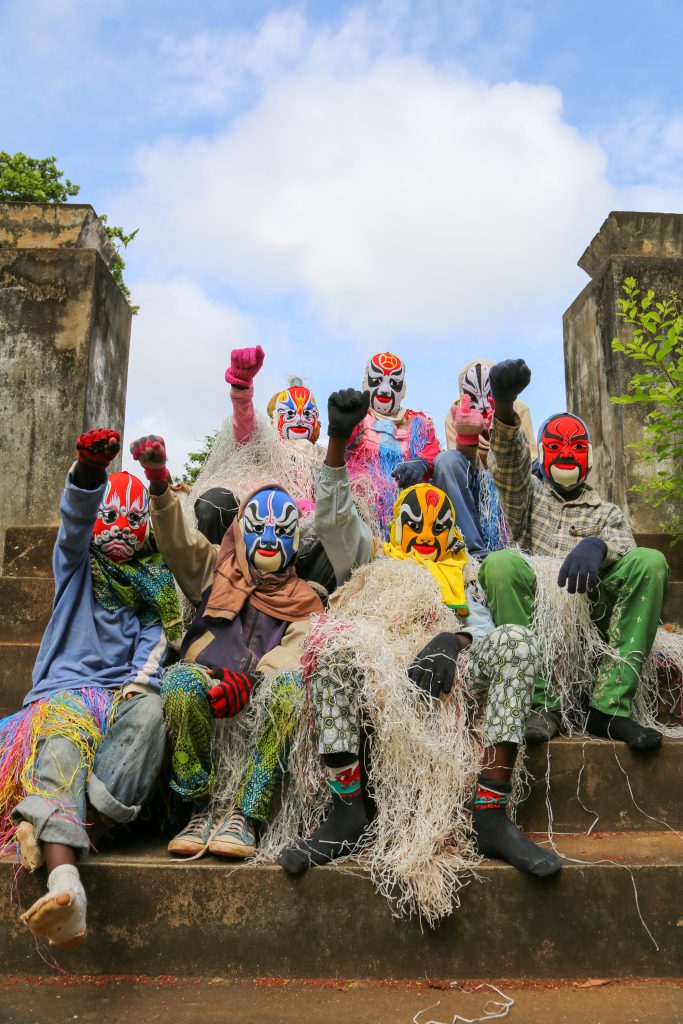
Emo de Medeiros, Kaleta Power from the photo series Kaletas, 2016, Hahnemühle print mounted on aluminum, 160 cm x 100 cm, supported by the Institute Francais
Emo de Medeiros, Kaleta Power from the photo series Kaletas, 2016, Hahnemühle print mounted on aluminum, 160 cm x 100 cm, supported by the Institute Francais

Emo de Medeiros investigates the diasporic rhythm of cultural exchange as it is defined by the history and lasting effects of colonialism, multipolar globalization, and increased digitization with his own mixed Beninese-French heritage in mind. His multimedia works link different knowledge systems exploring how the scientific and the magical are entangled in our everyday experience, from the transformative logic of readymades and the healing energies of the placebo effect to the algorithmic logic of the Ifá oracle, an ancient technique of futurology still present in Vodun religions of Nigeria and Benin. The latter is at the center of his installation Vodunaut (2017), which consists of seashell-covered helmets resembling indigenous headgear or characters from science fiction novels. Built-in screens play brief video sequences from various global sites and simulations of outer space. De Medeiros taps into the iconographic matrices of cowry shells that not only represent ancient currencies of exchange, symbols of wealth, fertility, and voyage but also serve as evocative tokens for Ifá diviners. Vodunaut connects the increasing omnipresence of mechanical brains in our everyday surroundings to spiritual heritage, stipulating that everything from artificial intelligence to divine oracles thinks accordingto binary logics.
An exploration of the space between the physical and the digital, memory and vision, lies at the center of de Medeiros’ Kaleta/Kaleta (2014–17), on view at Gallery 4. The work draws on the eponymous two-hundred-year-old tradition of young boys improvising performances accompanied by musicians on makeshift drums and objects hastily transformed into percussion instruments on the streets of Benin between Christmas and New Year’s Eve. By randomly combining five hundred video loops of dancers synchronized at the tempo of 133 beats per minute, de Medeiros creates an immersive setting of ecstatic folk rhythms, breakbeat, and contemporary street dance. The improvised costumes made of discarded secondhand clothing, French cement sacks or Indian rice bags, and colorful masks replicating Beijing opera makeup follow the amalgamated tradition of the Kaletas blending elements passed down from Afro-Brazilian Batebola, Carnival, ritual Fon masquerades, and Halloween traditions. The scenery shifts between an abstract empty void and the backdrop of the Fort of São João Baptista de Ajudá in Ouidah, Benin, which for centuries served as the center of the exploitative slave economy. Today, the fort is both a museum and a memorial overtaken by the performers and symbolically converted from a place of brutality into a locus of communal resistance.
Emo de Medeiros, Kaleta Power from the photo series Kaletas, 2016, Hahnemühle print mounted on aluminum, 160 cm x 100 cm, supported by the Institute Francais